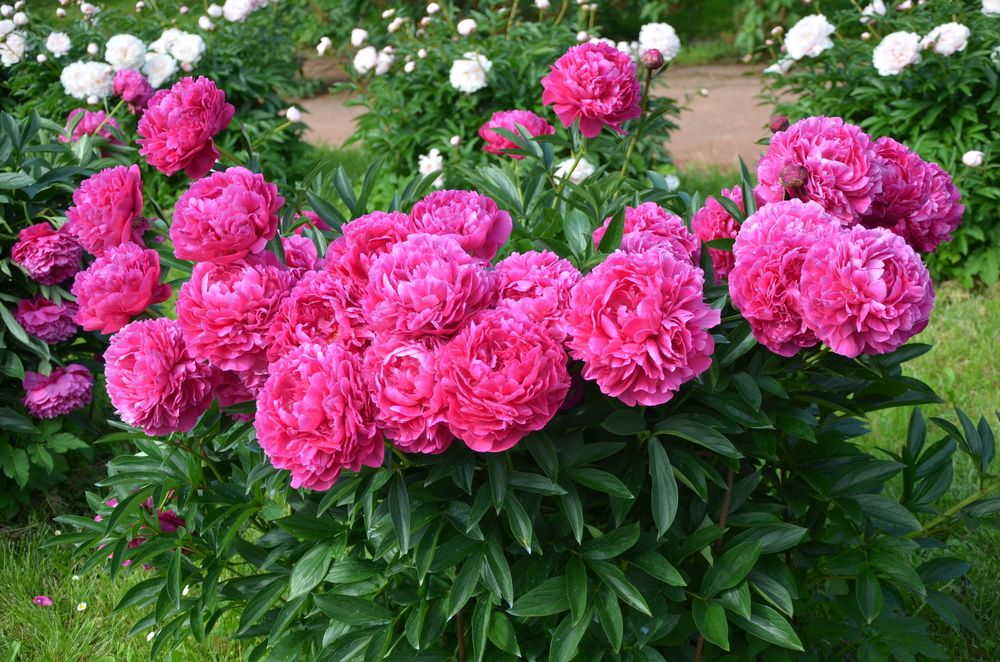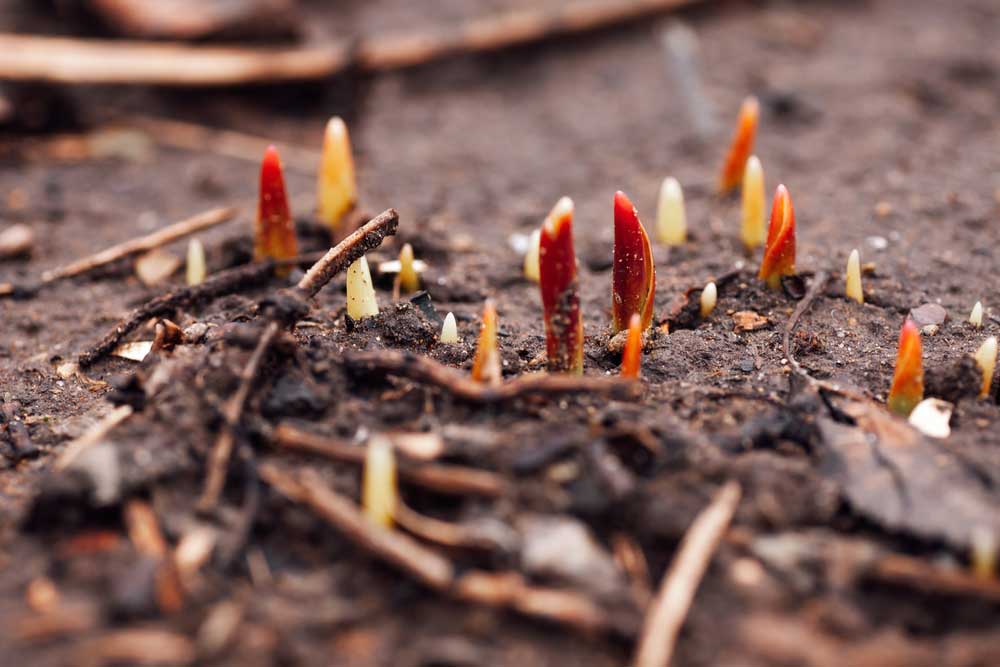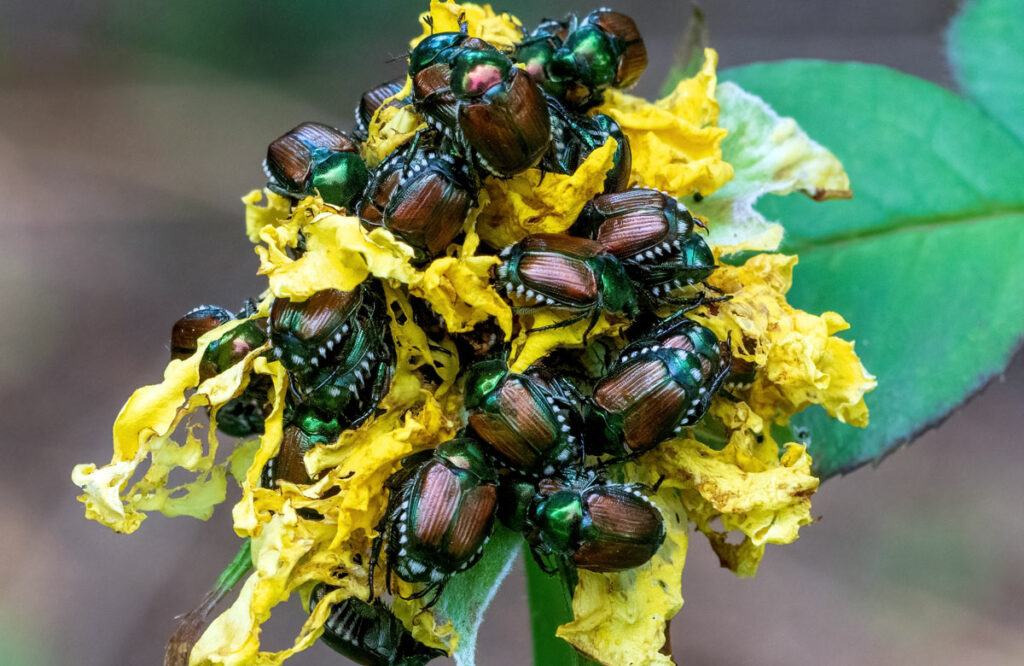
Peonies are adored for their lush blooms and captivating fragrance, making them a favorite in gardens around the world. However, once their flowers begin to fade, it’s essential to provide proper care to ensure they thrive for years to come.
In this article, we will discuss the steps you can take to maintain the health and beauty of your peonies after they have flowered.
Summers can be both magical and challenging for peony enthusiasts. The season brings forth an enchanting display of floral splendor, but it also marks the end of the blooming period, when care becomes crucial for the plant’s overall health. Awaken your inner gardener, roll up your sleeves, and let’s explore the world of peony care after flowering.
To keep your peonies flourishing, post-bloom care must focus on three crucial aspects: deadheading, watering, and fertilizing.
By following these guidelines, you’ll ensure your peonies continue to provide a stunning show year after year, delighting you and all who visit your garden.
Understanding Peonies Lifecycle
Bloom Time
Peonies are renowned for their stunning, large blooms that fill your garden with vibrant colors and delightful scents. These perennials typically bloom from late spring to early summer, depending on the variety and climate. Each bloom can last for about 7 to 10 days. To enjoy a longer blooming season, you can plant different types of peonies, such as early-flowering, mid-season, and late-flowering varieties.
Post-Bloom Period
After the peonies’ blooming period, you’ll notice that the flowers begin to fade. It’s essential to care for your peonies even after they flower to ensure healthy growth and abundant blooms in the following seasons.
Here are a few steps to follow during the post-bloom period:
- Deadheading: Remove spent flowers by cutting the stem back to the first healthy set of leaves. This process prevents the plant from diverting energy to seed production and encourages root and foliage growth. It also helps maintain the plant’s overall health and prevent potential disease build-up.
- Watering: Peonies prefer consistent moisture, so it’s good to keep an eye on your plants during hot summer days. You should water the base of the plant, avoiding wetting the foliage, as this can lead to fungal diseases.
- Fertilizing: Apply a balanced, slow-release fertilizer in the early spring and after blooming to boost growth and flower production for the following season. Avoid over-fertilizing, as this can lead to excessive foliage growth at the expense of flower production.
- Mulching: Add a layer of mulch around the base of your peonies to help retain moisture, suppress weeds, and regulate soil temperature. Organic mulches, such as shredded leaves or well-rotted compost, provide additional nutrients to the plants as they decompose.
Remember to monitor your peonies throughout the entire year, taking care to provide necessary maintenance, so they continue to thrive and produce breathtaking blooms year after year.
Pruning Peonies After Flowering

When to Prune
Pruning peonies after they flower is an essential step in maintaining their health and appearance. The best time to prune your peonies is once the flowers have faded, typically around late spring to early summer. It’s essential to prune them at this time to allow energy to be directed back into the plant, promoting growth and ensuring a beautiful display the following year.
How to Prune
Here’s a friendly step-by-step guide to help you prune your peonies:
- Gather your tools: Make sure you have a pair of sharp, clean pruning shears at hand. You will also need gloves to protect your hands.
- Locate the spent blooms: Locate the wilted, faded flowers on your peony plant. Follow the stem of each spent bloom down to where it meets a set of leaves or the main stem.
- Identify healthy foliage: Peonies typically have a mix of healthy and damaged foliage. Healthy leaves are dark green, while unhealthy leaves may be discolored or have signs of disease or pests, like holes or spots.
- Make the cut: Once you’ve identified the healthy foliage, it’s time to prune. Cut the stem at an angle just above the healthy leaves, about ¼ inch from the leaf joint. This will allow the plant to heal quickly and continue growing strong.
- Remove dead foliage: If there are any brown, yellow, or damaged leaves, remove them by cutting at the base of the leaf stem, close to the main stem of the plant.
- Cleanup: After pruning your peonies, be sure to clean up all trimmings and debris to prevent diseases and pests from harboring in your garden.
By following these tips, you will be setting your peonies up for success in the coming years, allowing them to bloom beautifully every season.
Caring for Peony Foliage

The Importance of Leaves
Peony foliage plays a crucial role in the life of your peonies. The leaves harness sunlight through photosynthesis, helping the plant produce energy for growth and bloom. Healthy foliage is essential for the overall health and vigor of your peonies, as well as their ability to produce flowers in the following seasons.
Maintenance Tips
- Pruning: Lightly prune your peonies after they have flowered. Remove spent blooms to promote plant health and prevent diseases. Be careful not to remove too much foliage, as the leaves are necessary for the plant’s energy production.
- Watering: Keep the soil around your peonies consistently moist, but not soaking wet. Water deeply and infrequently, allowing the soil to partially dry before watering again. This practice encourages deep roots and helps prevent diseases related to excessive moisture.
- Fertilizing: Apply a low-nitrogen, slow-release fertilizer after the blooming period to provide nutrients for foliage growth. Avoid high nitrogen fertilizers, as they may promote excess foliage growth at the expense of flower production.
- Disease management: Keep an eye out for signs of fungal diseases, such as blackened or discolored leaves. Remove any affected foliage promptly and avoid wetting the leaves when watering. Fungicides can be applied as a preventative measure, but should not be relied on solely for disease control.
By giving proper attention to your peony foliage, you will contribute to the overall health and well-being of your plants, ensuring beautiful blooms for years to come.
Winter Care for Peonies
Preparing for Winter
To ensure your peonies stay healthy after they flower, it’s essential to provide proper care during the winter months. Start by cutting back the foliage to ground level after the first frost. This prevents diseases from overwintering and keeps the plant tidy. Collect and dispose of any fallen leaves and debris around the plant to minimize the risk of pests and diseases.
Winter Protection Methods
Once you’ve prepared your peonies for winter, it’s crucial to protect them from extreme cold and fluctuating temperatures. Here are some winter protection methods to consider:
- Mulching: To insulate the soil and keep the roots warm, apply a 2-4 inch layer of organic mulch, such as straw, pine needles, or shredded bark, around the base of the plant. This will also help retain soil moisture and prevent heaving caused by freeze-thaw cycles.
- Snow Cover: If you live in a region with consistent snow, you’re in luck! Snow is an excellent insulator that keeps peonies warm throughout the winter. Just be sure not to physically disturb the plants while clearing snow from walkways, driveways, or other areas near the peonies.
Remember to keep an eye on your peonies throughout the winter, and remove any excess weight from ice or snow to prevent breakage.

Once spring arrives, and the ground begins to thaw, gently remove the mulch to allow new growth. With these winter care tips, your peonies will continue to thrive and reward you with stunning blooms for years to come.
Common Peony Problems After Flowering
Disease and Pest Issues
After your peonies have flowered, they may be prone to several diseases and pests. Two common diseases affecting peonies are:
- Botrytis or gray mold: This affects the leaves, stems, and buds, causing dark brown or gray spots. If left untreated, it can lead to the plant’s decline.
- Peony leaf blotch, also known as red spot or measles: This manifests as purple or reddish-brown spots on leaves, causing them to wilt and die.
A common pest affecting peonies is the peony scale. These insects suck the sap from the plant, causing yellowing, leaf drop, and stunted growth.

Prevention and Solution
To prevent and combat disease and pest issues, consider the following steps:
- Practice good garden hygiene: Clean up fallen leaves and spent blossoms regularly to prevent the buildup of mold and fungal spores. Also, be sure to remove dead plant material in the fall.
- Ensure proper plant spacing: Allow adequate space between plants for air circulation and to prevent the spread of diseases.
- Water appropriately: Avoid overhead watering, which can create a moist environment for diseases to thrive. Instead, water at the base of the plant.
- Monitor for pests: Regularly check the leaves and stems for any signs of damage or pests. Treat any infestations early to prevent further damage.
If your peonies are already affected by diseases, you can:
- Use a fungicide specifically formulated for peonies following the manufacturer’s instructions.
- Prune and dispose of any diseased plant parts.
For pest infestations, consider using:
- Insecticidal soap or horticultural oil to treat scale infestations on peonies.
- Biological controls, such as introducing beneficial insects like ladybugs to your garden.
Remember to always follow the product labels and guidelines when using chemicals in your garden, and consult with a local expert if you’re unsure about the best course of action.













